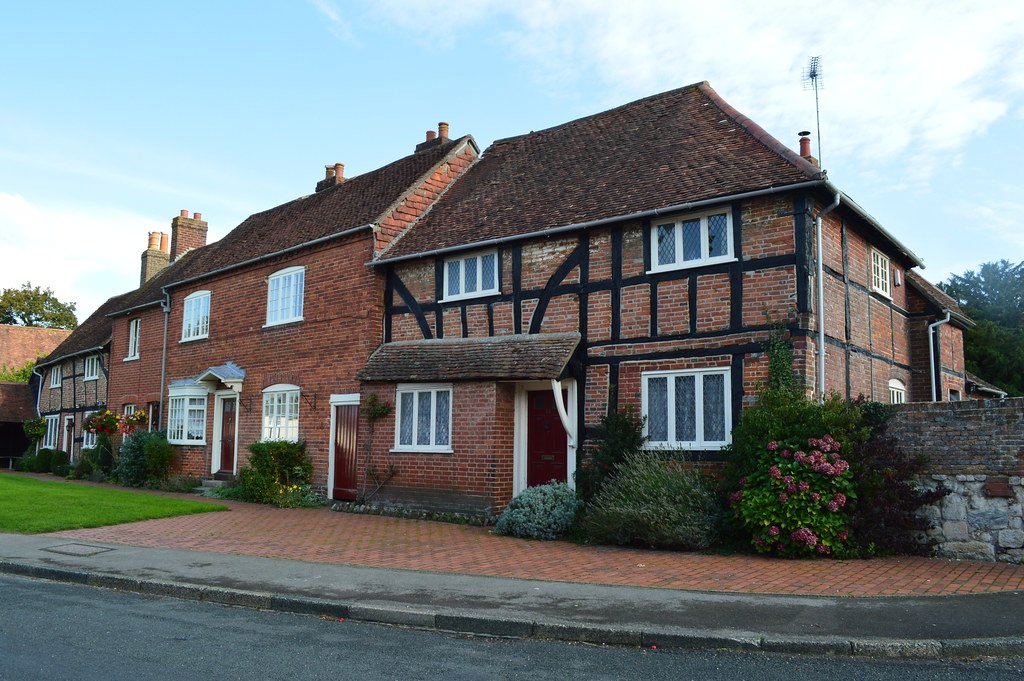
SOUTHWICK VILLAGE
The village of Southwick was founded by the Saxons. Southwick means south dairy farm. At some point the farm grew into a small village. However Southwick is not mentioned in the Domesday Book. Perhaps it was too small to merit a mention. The village was first mentioned in the 12th century. However the Church of St James-without-the-Priory Gate is believed to be Norman perhaps early 12th century. Later in the Middle Ages Southwick became quite a large and important village.
Augustinian monks moved to Southwick in the mid-12th century. The monks originally lived within the walls of Portchester Castle. However it was not really a suitable place so they built Southwick Priory between 1145 and 1153. The village flourished and in 1235 it was granted the right to hold a weekly market and an annual fair. (In those days fairs were like markets but they were held only once a year and people would travel a long way to attend one). Henry VI married Margaret of Anjou at Southwick in 1445.
However Henry VIII closed Southwick Priory in 1538 and it was converted to a house. Southwick House burned down in the 19th century but it was rebuilt.
King Charles I sometimes went to Southwick to visit his friend Sir Daniel Norton, the squire. He was at church in Southwick in 1628 when he heard the news that the Duke of Buckingham had been stabbed in Portsmouth. However by a strange irony Sir Daniel's son Richard Norton was a colonel in the parliamentary army during the English Civil War and he was one of the 9 people who signed the death warrant of King Charles I. Richard lived in Wymering.
In 1665 a tax was placed on hearths. In Southwick 53 houses were recorded (although some poor people would have been exempt from paying the tax). So Southwick probably had a population of between 250 and 300. By the standards of the time it was quite a large village.
In Southwick Richard Norton, the Squire had 34 hearths in his house. Nine people in the village had 4 or 5 hearths but many people had only 1 or 2 hearths. In those days poor people lived in simple huts with no more than 3 rooms.
In 1801 Southwick had a population of 569. It rose to 749 in 1841 but afterwards it fell. In 1901 Southwick only had a population of 549.
In the 19th century Southwick lost its fair but it gained a National (Church of England) School.
Southwick House is a manor house of the Southwick Estate. The house was built in 1800 in the late Georgian style, to replace Southwick Park house. The house is distinct for its two-storey foyer lit from a cupola, and a series of elliptical rooms.
The house became important during World War II. In 1940 the estate owners allowed the Royal Navy to use the house to accommodate overnight pupils of the RN School of Navigation. In 1941, after heavy bombing of the dockyard, the house was requisitioned and became the new home of HMS Dryad.
In 1943, D Day was being planned and the house was chosen to be the location of the Supreme Headquarters Allied Expeditionary Force, and HMS Dryad was moved onto further land requisitioned from the estate. in the months leading up to D-Day, the house became the headquarters of the main allied commanders, including Naval Commander-in-Chief Admiral Ramsey, Allied Supreme Commander General Eisenhower and the Army Commander-in-Chief General Montgomery. The large wall maps that were used in planning D-Day are still in place in the house, with the various markers showing the positions of the involved forces at the moment the first landing commenced.
After the end of the war HMS Dryad remained on site, with the house becoming the wardroom. In 2004 the functions of HMS Dryad were transferred to HMS Collingwood in Fareham and the site reverted to its original name of Southwick Park. Since then it has been home to the tri-Service Defence Police College.
Today Southwick is a charming village with 2 pubs the Red Lion and the Golden Lion and a village shop. Southwick Brewhouse opened as a museum and shop in 2005